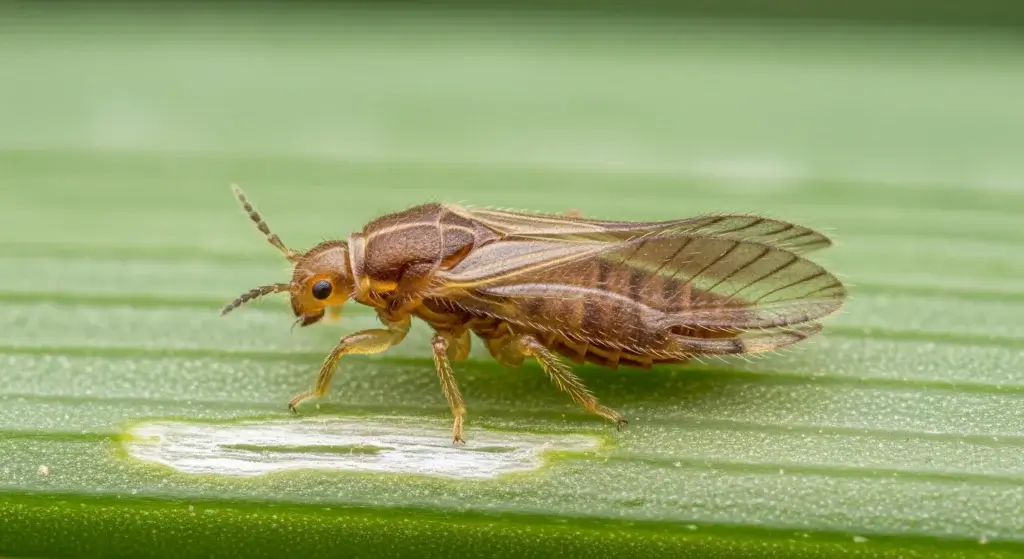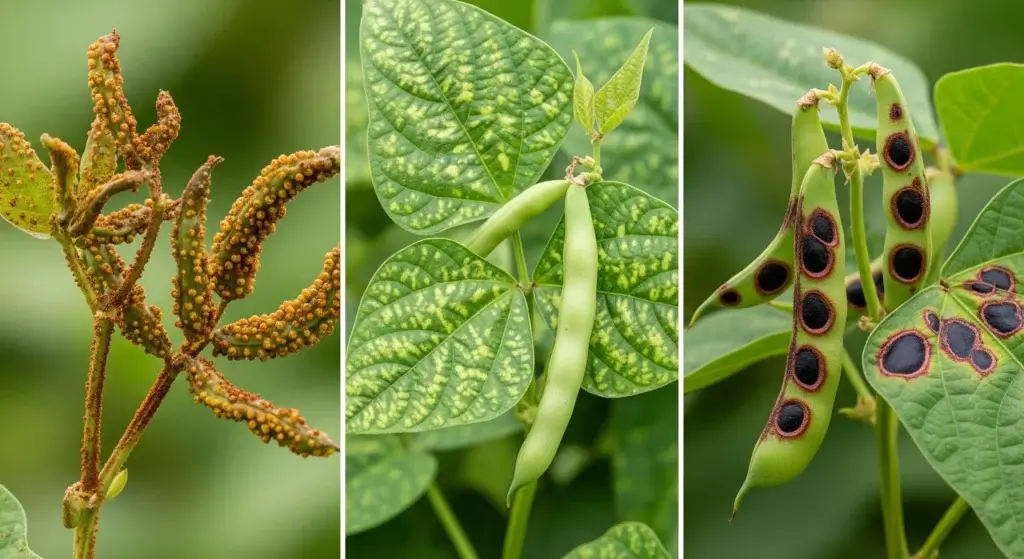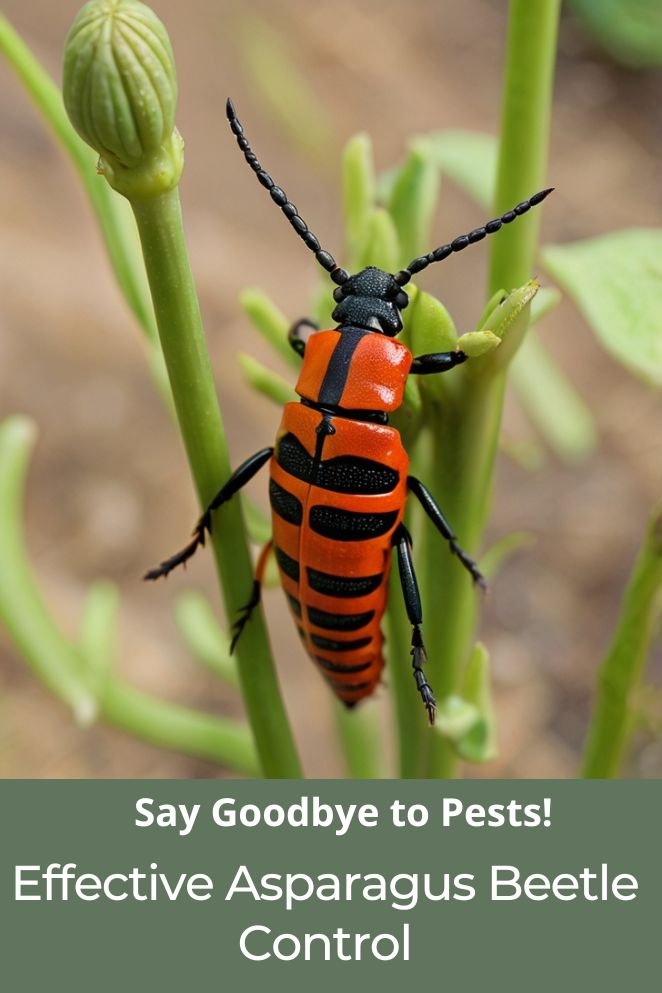
Asparagus beetles are a common pest that can cause significant damage to asparagus plants.
These beetles can be difficult to control, but there are several methods that can be used to manage their populations and protect your asparagus crop.
In this article, we will explore the signs of asparagus beetle damage, organic control methods, and integrated pest management (IPM) approaches to help you effectively control asparagus beetles.
Identifying Asparagus Beetles
When it comes to safeguarding your asparagus plants from potential threats, identifying asparagus beetles is key.
Here’s a detailed overview to help you spot these pests in your garden:
Appearance
- Size and shape: Asparagus beetles are relatively small insects, typically measuring around ¼ inch in length.
- Coloration: These beetles come in various hues, commonly ranging from green to yellow.
- Distinctive features: One of the most notable characteristics of asparagus beetles is their elongated antennae, which extend from their heads.
Activity period
Asparagus beetles are most active during the spring and summer months, coinciding with the peak growing season for asparagus plants.
During this time, they feed on tender asparagus foliage, potentially causing damage to your crop if left unchecked.
- Read also: Effective Strategies on How to Prevent Potato Beetles
- Read also: Natural Caterpillar Repellent: Safeguard Your Garden
Behavior
- Feeding habits: Asparagus beetles primarily feed on the foliage of asparagus plants, consuming tender shoots and leaves.
- Lifecycle: These beetles undergo multiple generations each year, with adults laying eggs on asparagus foliage.
Identification tips
- Visual inspection: Regularly inspect your asparagus plants for signs of beetle activity, including feeding damage, adult beetles, eggs, and larvae.
- Monitoring: Set up monitoring traps or sticky traps near your asparagus plants to capture adult beetles and monitor population levels.
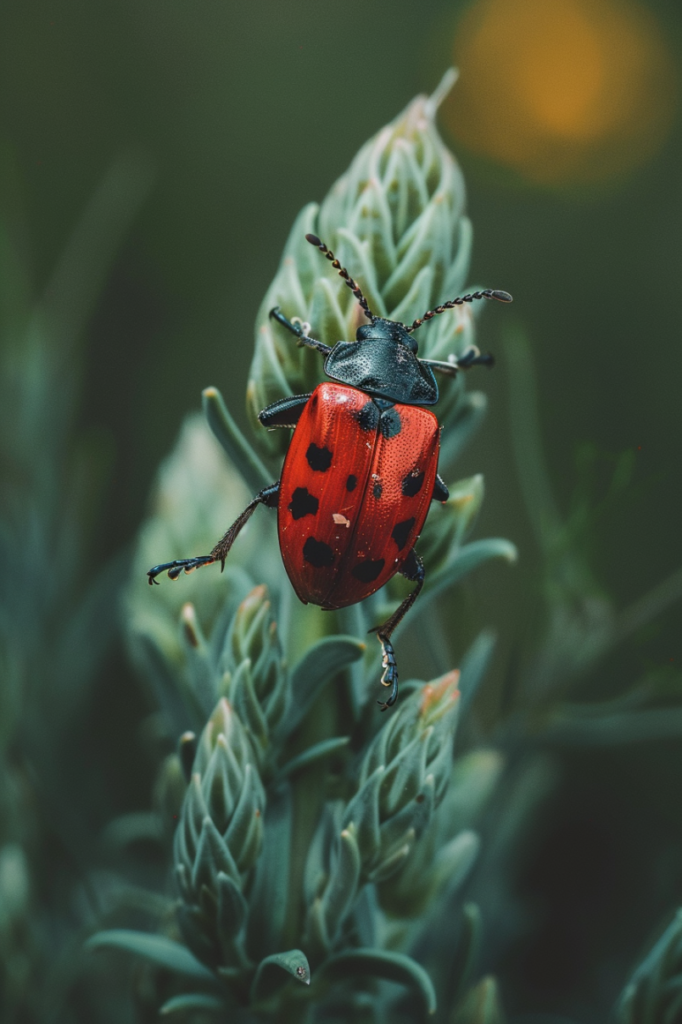
Signs of Asparagus Beetle Damage
Asparagus beetles pose a threat to the health and productivity of your asparagus plants, manifesting in several telltale signs of damage.
Here’s a detailed look at the indicators of asparagus beetle infestation:
Holes in the leaves
Asparagus beetle activity often results in conspicuous damage to asparagus leaves, characterized by the presence of holes and tears.
Their voracious feeding habits can severely compromise the plant’s ability to photosynthesize and produce energy, ultimately weakening the plant and diminishing its overall health and productivity.
Stunted growth
Asparagus beetles, while primarily known for feeding on asparagus foliage, also target stems and other plant parts.
Their feeding disrupts nutrient and water flow, resulting in stunted growth.
Affected plants exhibit distorted growth patterns, with shortened stems and smaller foliage.
This compromises spear production and leads to reduced yields over time.
Reduced yields
Asparagus beetles not only target foliage but also feed on the buds and flowers of asparagus plants, disrupting their reproductive cycle and reducing the number of viable flowers.
This interference ultimately impacts the yield of edible spears.
Over time, the cumulative effects of asparagus beetle damage can significantly decrease yield.
Repeated infestations weaken plants, resulting in fewer and lower-quality spears, diminishing the overall productivity of the asparagus bed.
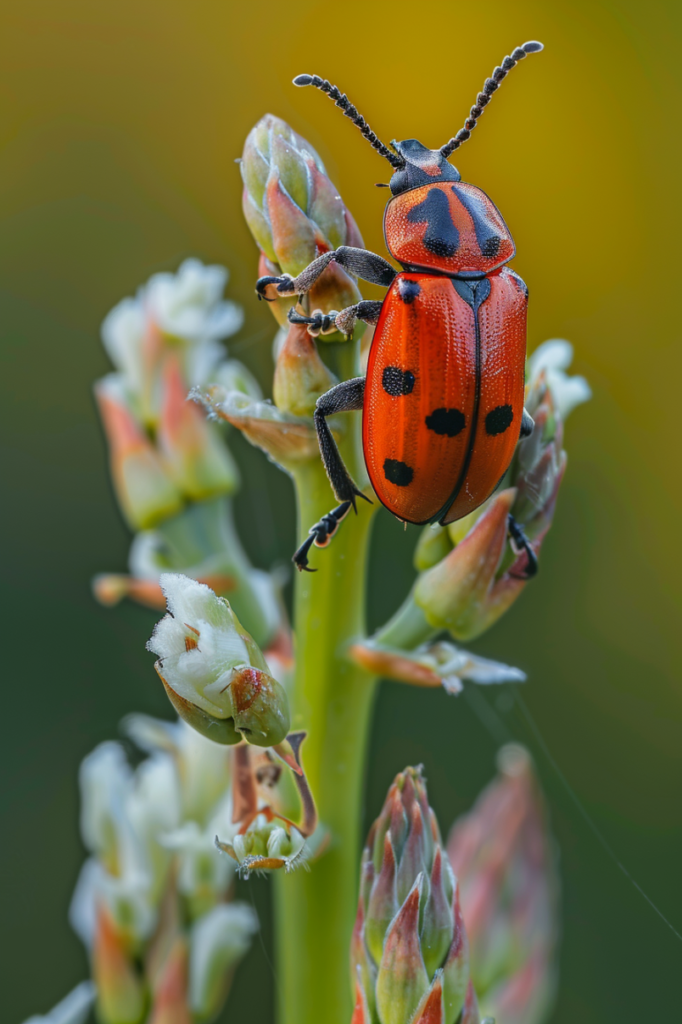
Organic Control Methods
When faced with asparagus beetle infestations, organic control methods offer effective and environmentally-friendly solutions.
Here’s a closer look at these methods and how they can help mitigate beetle populations:
Manual removal
Hand-picking
Engage in regular monitoring of your asparagus plants and manually remove adult beetles, larvae, and eggs by hand.
This method is labor-intensive but can be highly effective, particularly for small-scale infestations.
Technique
Carefully inspect plants for signs of beetle activity, including feeding damage, eggs clusters, and adult beetles congregating on foliage.
Gently pick off beetles and eggs, dropping them into a bucket of soapy water to prevent reinfestation.
Natural insecticides
Neem oil
Neem oil, derived from the neem tree, serves as a natural insecticide with repellent and anti-feedant properties.
It disrupts the growth and development of asparagus beetles, effectively reducing their populations without harming beneficial insects.
Pyrethrin
Pyrethrin, derived from chrysanthemum flowers, is a botanical insecticide known for its rapid knockdown effect on pests like asparagus beetles.
It targets the nervous system of insects, causing paralysis and death upon contact.
Companion planting
Marigolds
Planting marigolds alongside asparagus can help repel asparagus beetles due to their strong scent and natural insect-repelling properties.
Marigolds emit compounds that deter pests, reducing the likelihood of beetle infestations.
Nasturtiums
Nasturtiums are another companion plant known for their ability to deter asparagus beetles.
Their pungent aroma and peppery foliage create an inhospitable environment for beetles, reducing their presence in the garden.
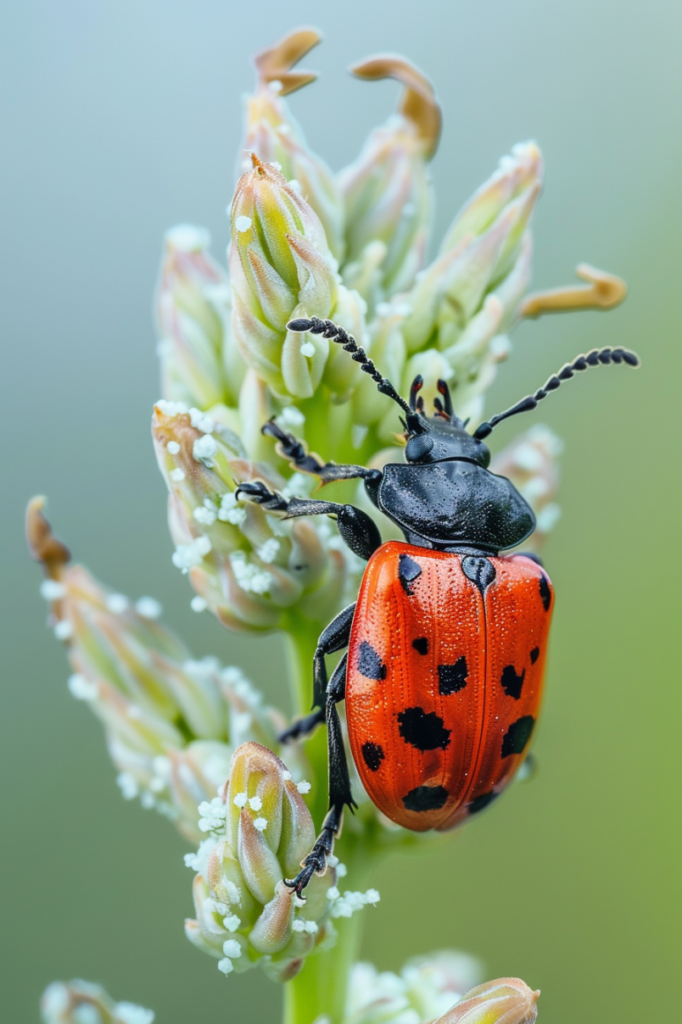
Prevention Methods
Preventing asparagus beetle infestations is the most effective strategy to maintain the health and vitality of your asparagus crop.
Here’s a detailed overview of prevention methods to help you keep your garden free from these pesky pests:
Keep the garden clean
Remove debris
Regularly clean your garden area and remove any debris, such as fallen leaves, weeds, and decaying plant matter.
Asparagus beetles and their larvae often hide in debris, so keeping the garden clean helps reduce potential hiding spots and breeding grounds.
Sanitation practices
Practice good sanitation by promptly removing and disposing of any infested plant material.
Be diligent about cleaning gardening tools and equipment to prevent the spread of beetle eggs and larvae to healthy plants.
Use row covers
Utilize row covers or floating row covers to physically block access to your asparagus plants.
These covers create a protective barrier that prevents asparagus beetles from reaching the plants and laying eggs.
Install row covers over your asparagus beds early in the growing season, before beetles become active.
Secure the covers tightly to the ground to prevent beetles from crawling underneath.
Monitor the plants regularly
Visual inspection
Regularly inspect your asparagus plants for signs of beetle activity, including feeding damage, egg clusters, and adult beetles.
Pay close attention to new growth and emerging spears, as these are particularly vulnerable to infestation.
Early detection
Early detection of asparagus beetle infestations is crucial for effective management.
By monitoring your plants regularly, you can detect signs of infestation early and implement control measures before populations escalate.
Integrated Pest Management (IPM) Approach
Integrated Pest Management (IPM) is a comprehensive approach to addressing asparagus beetle populations by considering the interconnectedness of pests, plants, and the environment.
It involves combining various control methods tailored to the specific needs of the garden.
These methods include cultural controls like sanitation and companion planting, biological controls utilizing natural predators, mechanical controls such as row covers or hand-picking, and chemical controls as a last resort.
By integrating these methods, IPM aims to manage beetle populations effectively while minimizing environmental impact.
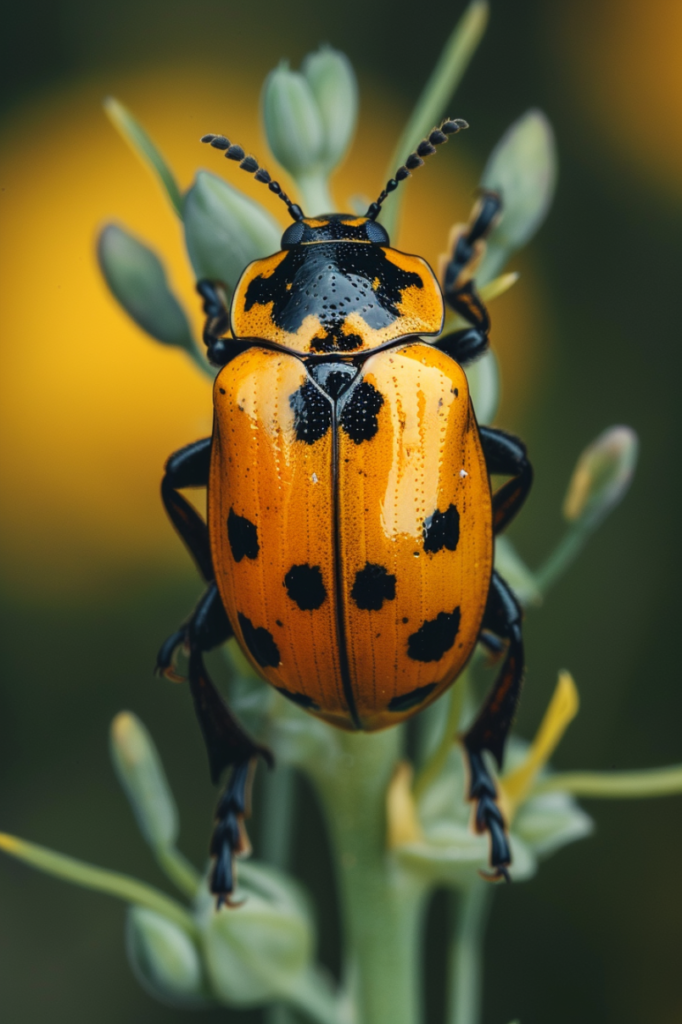
When to Call in Professional Help
If persistent asparagus beetle infestations persist despite diligent efforts, seeking professional assistance may be necessary.
Pest control services offer expert assessment and tailored control methods, including advanced insecticide applications, to effectively manage challenging infestations.
Prioritize providers who emphasize environmentally-friendly practices to ensure the safety of beneficial insects and the overall garden ecosystem.
- Read also: Garden Detectives: Cracking The Signs of Pest in Vegetables
- Read also: Pest Damage on Vegetables: A Guide to Identification and Control
Conclusion
Asparagus beetles are a common pest that can cause significant damage to asparagus plants.
By identifying the signs of asparagus beetle damage, using organic control methods, and implementing an integrated pest management (IPM) approach, you can effectively control asparagus beetle populations and protect your asparagus crop.
FAQs
The signs of asparagus beetle damage include holes in the leaves, stunted growth, and reduced yields.
You can control asparagus beetles organically by using manual removal, natural insecticides, and companion planting.
You can prevent asparagus beetle infestations by keeping the garden clean, using row covers, and monitoring the plants regularly.
You should call in professional help for asparagus beetle control if you are unable to control the beetles using the methods described above.


